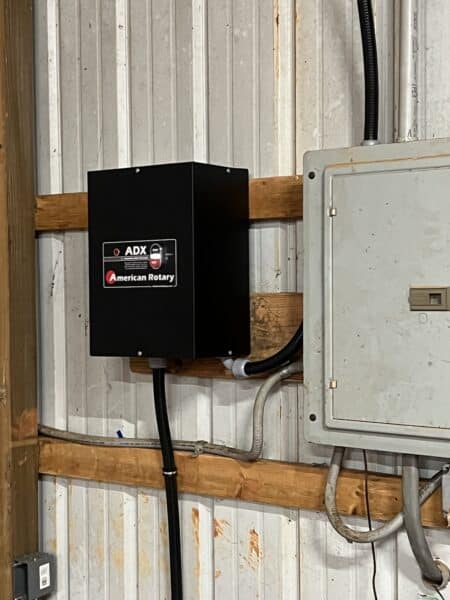Look for a Rotary Phase Converter with These Three Fundamentals
Most farms lack access to the three-phase power grid, and paying the power company to bring three-phase power onsite is expensive.
However, there is a cost-effective way to gain three-phase power for irrigation pumps and tower pivots, hullers and balers, grain dryers, and any other heavy-duty agricultural equipment your operation requires. A phase converter can give you the precise power you need while keeping your costs low.
So, what makes a good rotary phase converter? The right solution should provide these three advantages:
1. Durability to Withstand Extreme Conditions
2. Voltage Balance
3. Automated and Wireless Control Options
1. Durability to Withstand Extreme Conditions
As with all your equipment, you need your phase converter to handle the rugged physical conditions, swings in temperature, etc. on your farm. A few things to look for in a durable phase converter include:
— The ability to withstand temperatures ranging from -50 to 120 degrees
— The ability to tolerate rain and snow
— The ability to combat wind and dust
— Fully enclosed housing with rodent screens
— Heavy-duty mounting capability
2. Voltage Balance
It’s important to look for a phase converter that has variable impedance technology built directly into the idler/generator. This will drastically reduce inrush (starting) current for reliable starts, every time, with no voltage drop.
Unfortunately, many phase converter manufacturers claim that they have such technology, when they instead use a regular stock motor, rewire it for low voltage and cut off the exposed rotating shaft, which is also a huge safety hazard. If you’re not sure whether a particular phase converter actually provides variable impedance, feel free to contact us.
Additionally, a phase converter should be rated to run single or multiple motor loads. This capacity is only limited by the single-phase current available. By selecting a converter with precision balanced from a “no-load” condition, you can easily run a small motor together with larger ones using the same phase converter. More importantly, it should also be able to operate with no load engaged for an indefinite period, so you don’t have to worry about damaging your converter while your equipment loads are not operating.
3. Automated and Wireless Control Options
When you’re running a physically demanding business like a farm, you don’t have time to waste. Having to constantly start-up or check the performance of your machinery throughout the day can really drag down your operation.
Options to add wireless remote starters and SDDO (Start Delay, Delay Off) timers can alleviate these issues regarding your phase converter. A long-range radio frequency remote starter can allow you to simply start your phase converter without having to go out to the converter itself, wherever it may be on your land. An SDDO timer lets you take the convenience a step further, automating when your machines turn on and off — a feature that can be valuable with a pivot irrigation system, for example.
With these three key attributes in mind, you have a good head start toward finding a rotary phase converter that best suits the demand of your equipment and output on the farm. But if you have any questions, don’t hesitate to ask.
In the meantime, here’s an example of how a 30-acre pickle farm in Indiana is running their entire irrigation system with the help of rotary phase converters.



